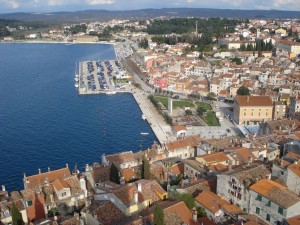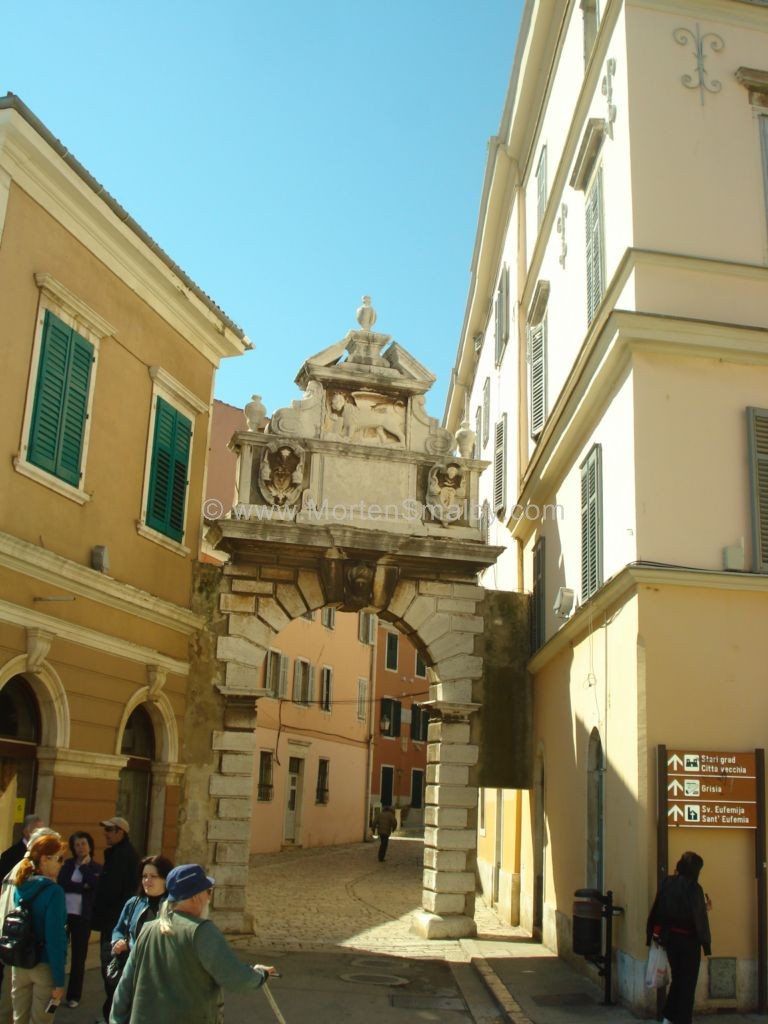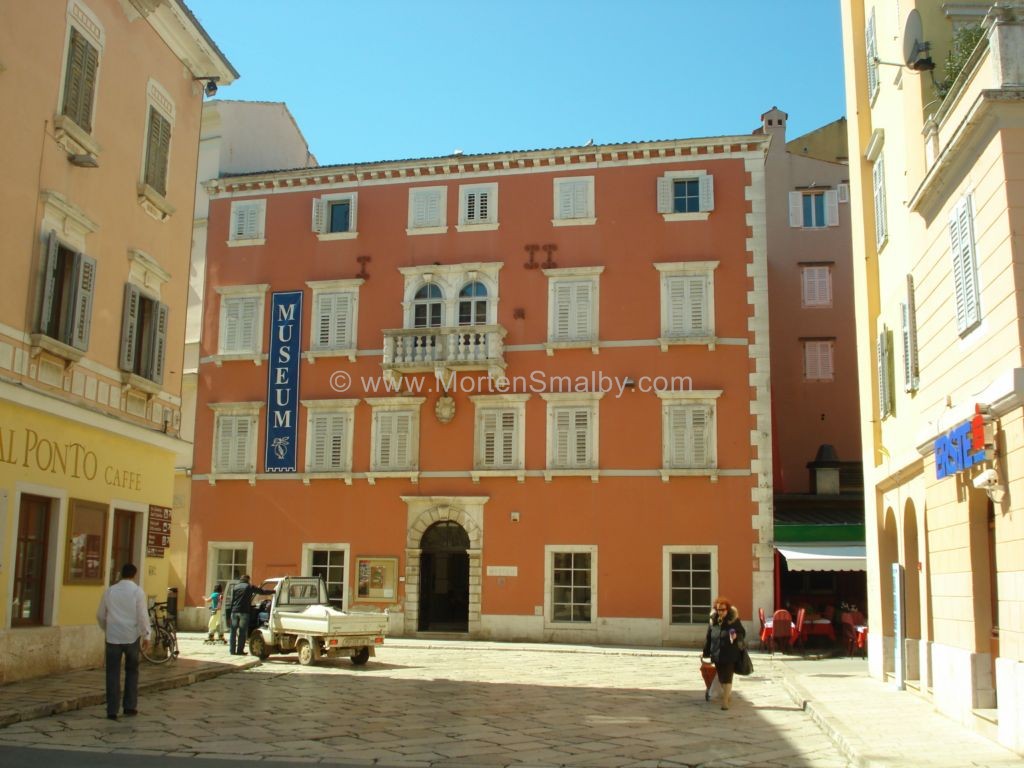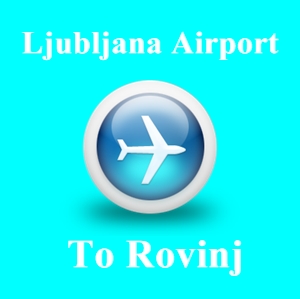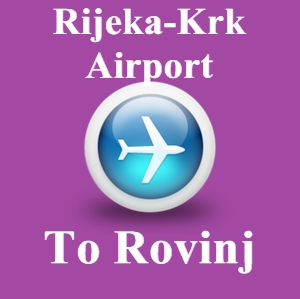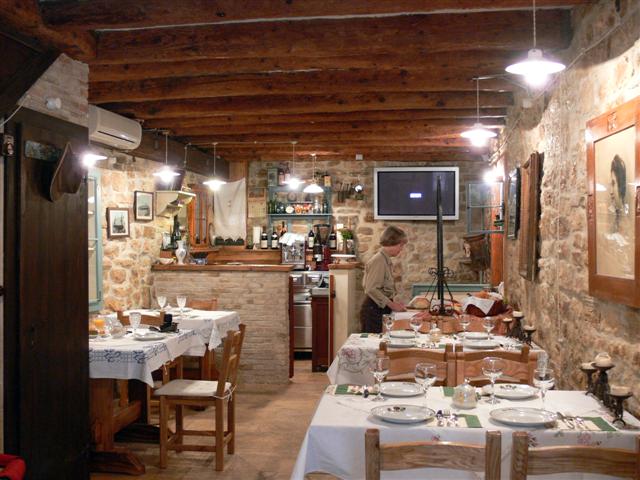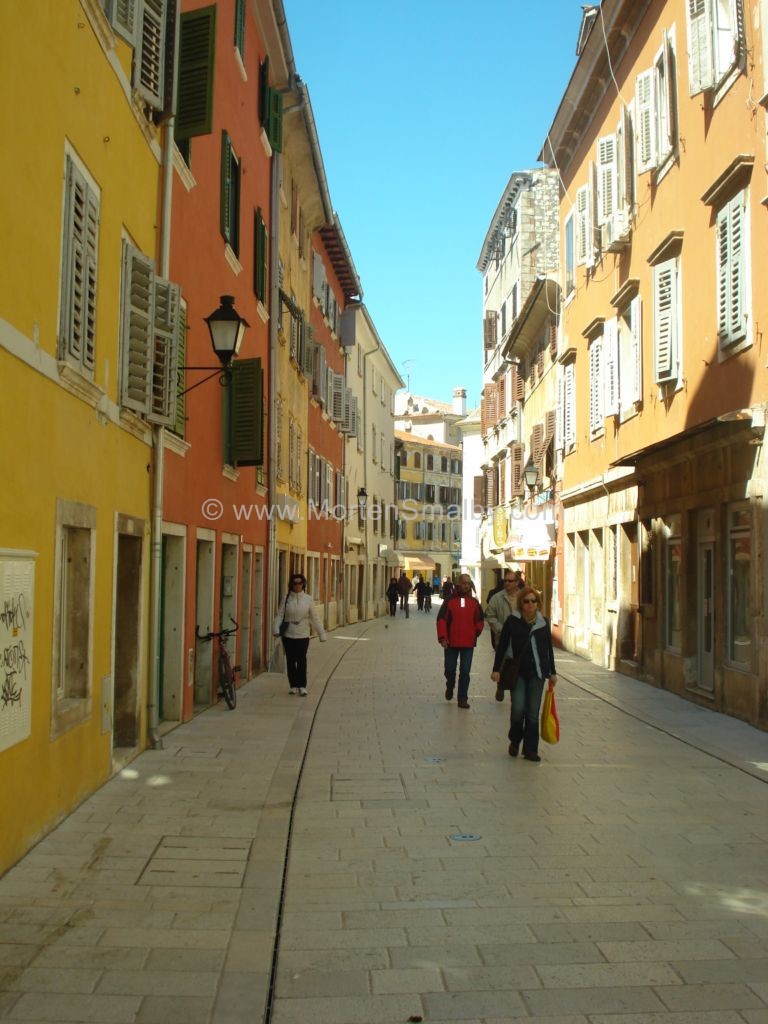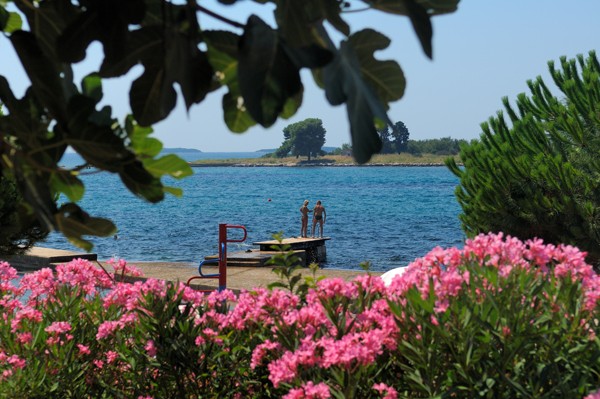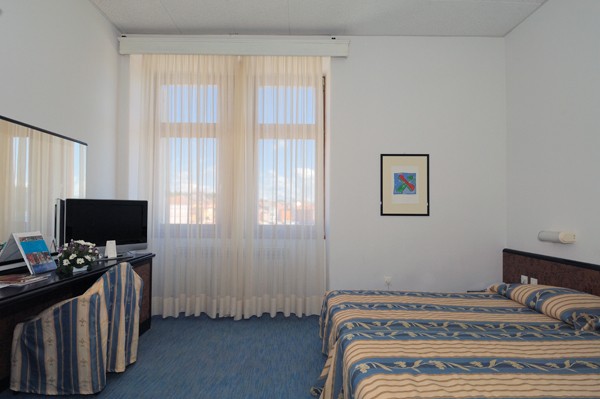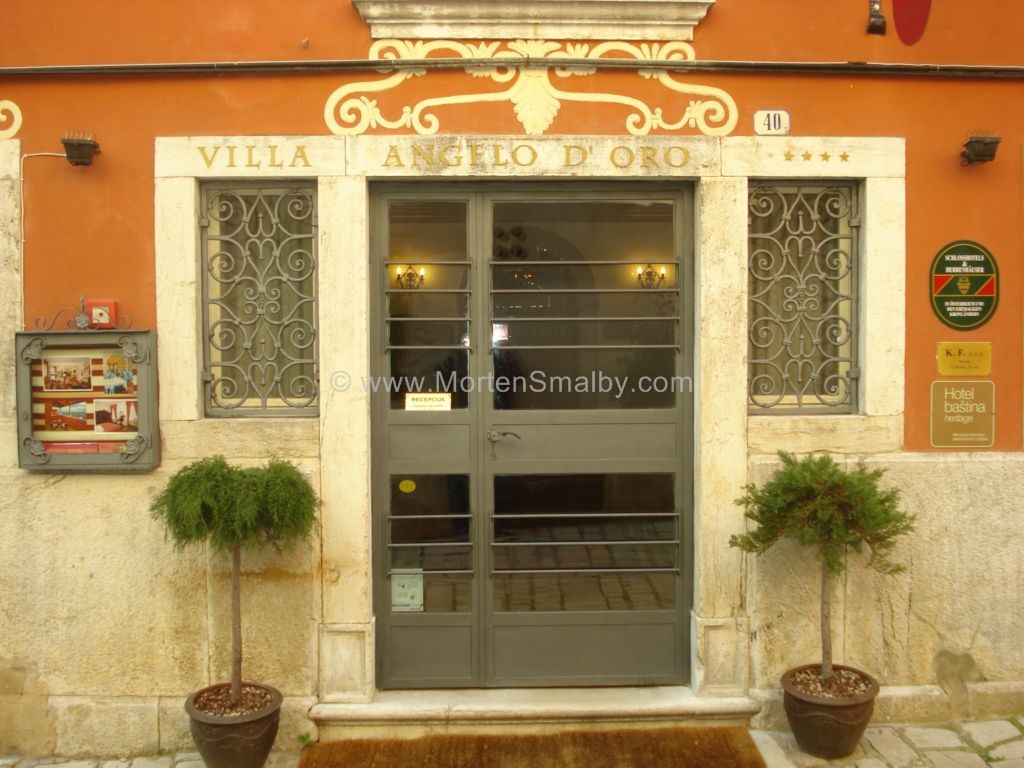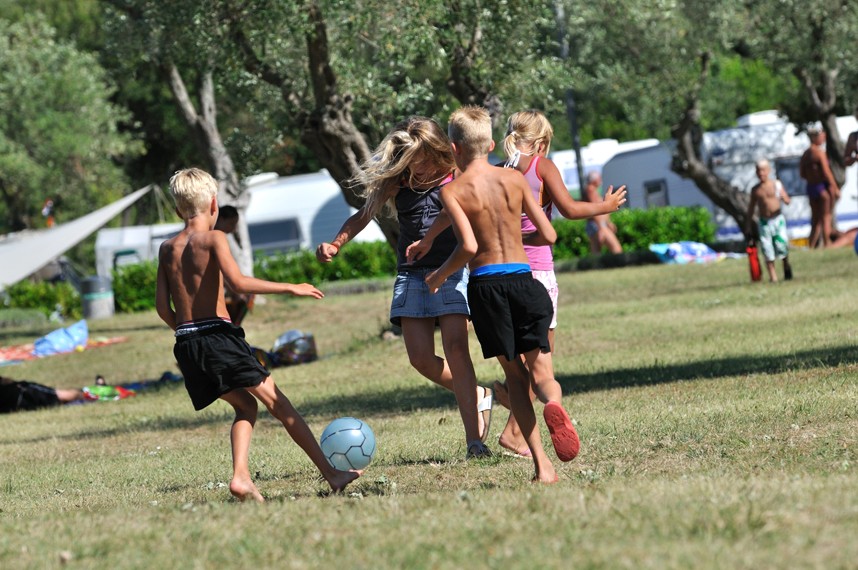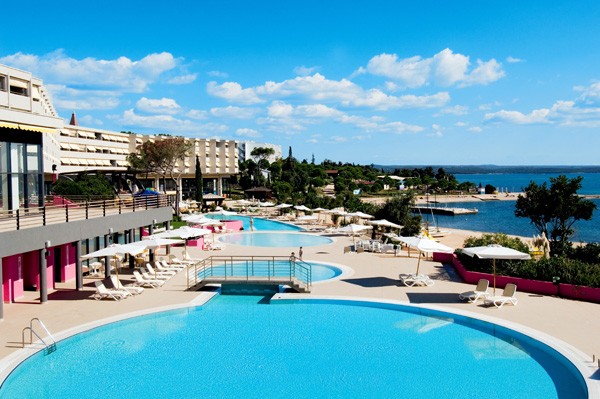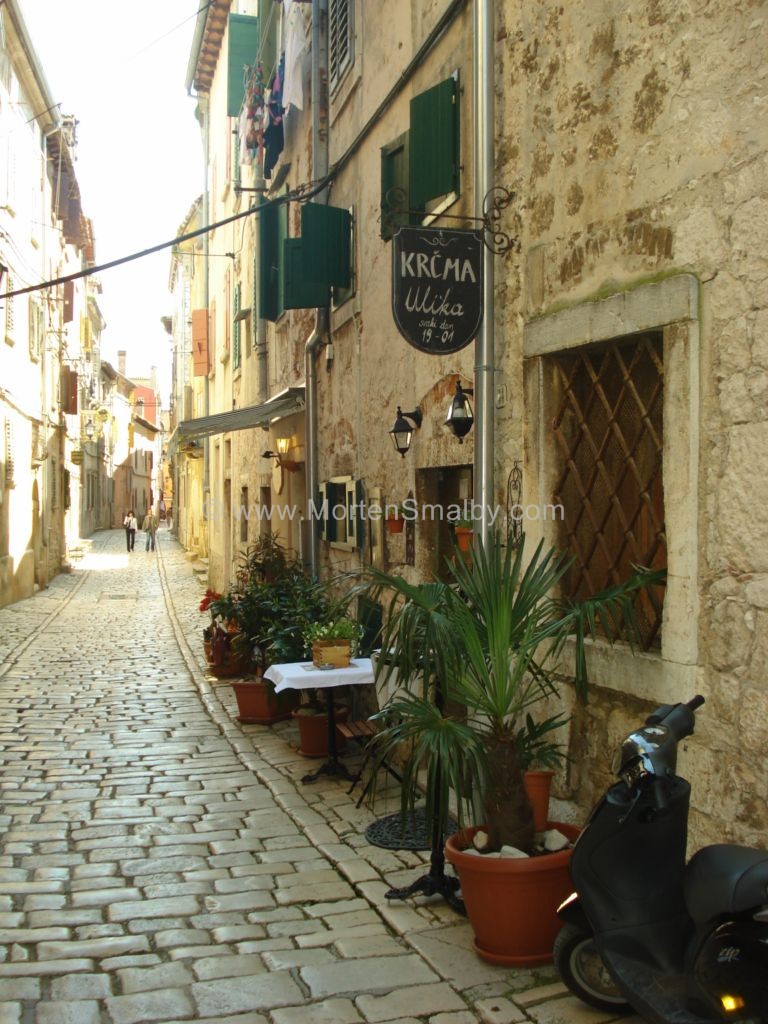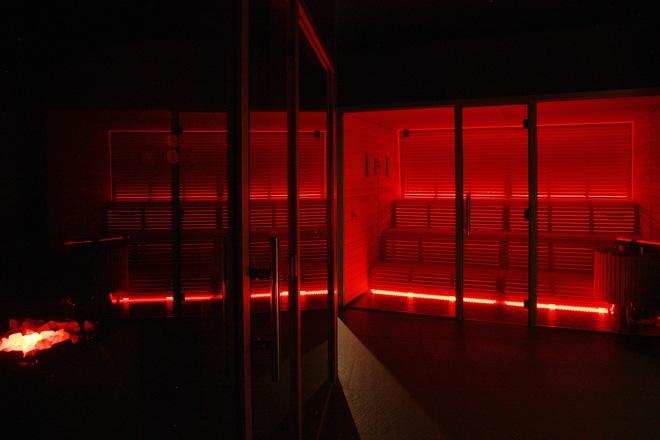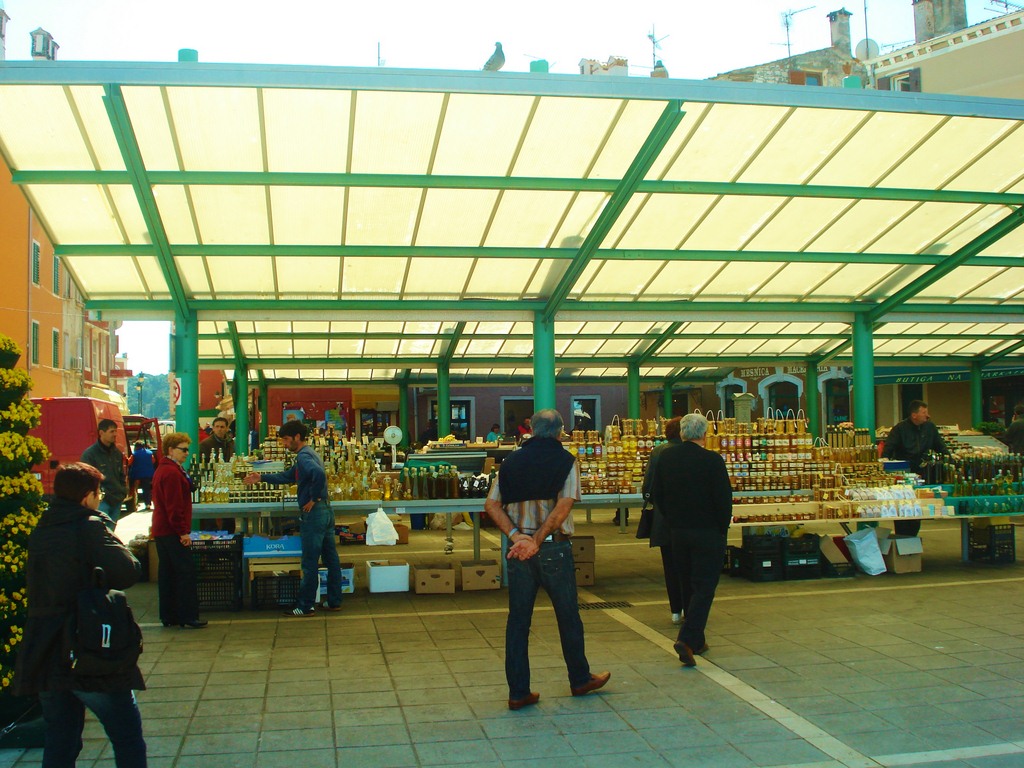Rovinj sights to see
The old town has beauiful, crumbling buildings, winding stone streets and photo opportunities at every turn. It is abundant in numerous Romanesque-Gothic, renaissance, baroque and neo-classicist windows, balconies, exterior stairways, roof terraces, portals and stairways. The narrow streets and squares contain amazingly crammed rows of houses supporting one another and ascending all the way to the Church of St. Euphemia.
Town gates
Three of the seven town gates have preserved their original forms: the St. Benedict’s Gate (presently the Coast Gate), the Gate under the Wall bearing an inscription from 1590, and the Gate of St. Cross with the town crest. The Old Fish Market Gate, presently the Balbi Arch, has undergone certain modifications.
Balbi’s Arch
You can enter Old Town from the main square through the 17th-century Balbi Arch, which leads up to Grisia, Rovinj’s most interesting street. The arch is on the site where one of the town’s seven gates once stood; it is carved with a Turk’s head on one side and a Venetian’s head on the other.
Town clock
It is situated on the main town square in Rovinj. It used to be a tower on the south corner of the former walls. The clock was originally built in the 12th century. Beneath the tower, there was a prison for minor crimes.
Town Hall
Formerly a Praetorian palace, its foundations date back to the year 1308. Over the centuries to come, it was expanded and reconstructed many times. A part of the ground floor even contained a prison, while the upper floor contained the big Town Hall Room, various offices and archives. The façade and the atrium were reconstructed between 1850 and 1860 when a series of Venetian and Rovinj family crests were mounted. It is presently the seat of the Town Hall.
Califfi Palace
The baroque palace of Count Califfi from the 17th-18th century is home to the Native Museum of the Town of Rovinj. It was established in 1954 on initiative of Rovinj’s artists who wanted it to become a place for collection of cultural wealth and a place of intensive exhibiting activities.
Carrera
Taking a walk on Carrera Street, full of shops and connecting the historical core and new part of Rovinj, is inevitable. The name Carrera originates from the name «strada per/di carri», meaning the road for wagons. Until the 19th century, Carrera represented the main road to Rovinj and ran directly to the bridge on the channel (presently the area in front of the Native Museum, which separated the island settlement from the mainland. This was also the main road toward the south and east territory of Rovinj. Carrera began to develop the contours of a street in mid-17th century when Rovinj began to spread ashore due to the end of the war and plague epidemic.
Church of st. Euphemia
The most imposing structure that bears the name of the patron saint of the town dominates the whole old town centre. It was built in the eighteenth century, while its façade in Venetian-baroque style was added in the middle of the last century. At the top of the sixty-metre-high bell tower stands the copper statue of St. Euphemia, which shows the direction of the wind by turning on a spindle.
The baptismal font of The Holy Spirit
Has been constructed in a heptagonal shape and is the oldest relic situated in the Lokva Square. The thirteenth century Romanesque church which houses the font is also interesting because of the detailed carvings of the transenna depicting scenes of Golgotha.
St. Thomas Church
St. Thomas Church is located right next to the old Rovinj-Kanfanar railroad. The layout is the shape of a cross, with subsequently added bell tower on the north side. it was probably built in the late 8th or early 9th century. The Church of St. Thomas is a nice example of sacral architecture during the Carolinian era in Istria.
Church of St. Benedict:
Under the Arches Square contains the Church of St. Benedict from the 14th century, surrounded by tall houses, and the St. Benedict’s Gate (presently the Coast Gate) is nearby, with a stretch of the medieval walls from the 12th century.
Antonio Gandusio Theater
It was completed in 1854 and built according to a concept provided by the mayor of Rovinj Nicolo de Califfi. Originally located in the very center of town’s life – next to the marketplace, with a butcher shop and a fish market on the ground floor – Gandusio vibrantly adapts to the changing pace of life in the town. This is a venue for comedies, dramas, farces, operas with the orchestra below the stage, operettas, political rallies, cultural and political lectures. It is presently the town cinema.
Rovinj Aquarium ( Ruder Boskovic institute)
Founded in 1891, the Aquarium is Rovinj’s oldest museum and also one of its best. It is in the same facility as the Ruder Boskovic Center for Maritime Research and has a nice collection of local marine life.
Native Museum of the town of Rovinj
It is situated in the baroque palace of the Califfi Counts from the 17th-18th centuries. The museum’s public role is dual – it both a town gallery and a permanent museum layout exhibiting more valuable items from its rich collection
Rovinj Heritage Museum ( Zavicajni muzej)
The museum was founded in 1954 to collect and exhibit works of art. Today its collections include old masters, contemporary works, a library, and a cache of local archaeological finds. The museum is situated in a baroque palace that once belonged to Italian aristocrats.
Tags: Euphemia, Museum, Rovinj, Rovinj Sights, Stuff to do


